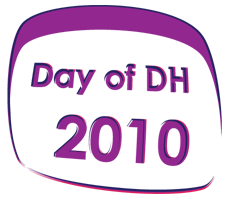Alex Sévigny, who I worked with closely at McMaster, has written a good response to Margaret Wente’s column in the Globe about What is the most pressing problem facing Canadian universities today? (Tuesday, April 13, 2010) Alex, in What’s wrong with Canadian universities – part 1 argues that it is not professors who are the problem, but funding levels that have been frozen at 1990 levels. Wente’s column title “Universities are sitting ducks for reform” makes it sound like it is simple – stop paying for research and you can get a lot more students educated for a lot less money. Alex’s answer is that the profs are not making that much when you think about how long it takes to educate them and how hard they work. He concludes with,
Canada needs a powerful, national vision for post-secondary education. And it needs it now. Post-secondary education is the key to prosperity from today until the year 2100.
The policy-maker who comes up with one will be remembered as one of this century’s great visionaries.
TOMORROW – why education matters.
Since reading her column I have been thinking about how I would reply, and here are some of the things that need to be considered before we shoot any sitting ducks,
- Education is a provincial jurisdiction in Canada which means that the federal government is constrained in how it can show leadership. The Federal government can and does invest in research (think research councils, CFI, graduate scholarships and so on). This means that the province may not save that much by cutting support for research (as Wente thinks they will) since it isn’t coming from the province.
- The big problem is that health is eating out every provincial budget and it is the “third-rail” of Canadian politics. As health budgets rise faster than inflation the amount left over for other mandates is less and less. It may be time to move higher education to the federal level just so it can be protected from health (along with everything else.)
- The problem with so many enthusiastic sitting-duck solutions to the university is that they all isolate one function in a complex institution and say that that is what universities should do and nothing else (and therefore we can save money by not funding the others stuff.) Universities are like cities – they serve many functions in an integrated fashion. Modernist architects thought it would make sense to separate the functions of the city (people live in one area and all stores are in another) and then plan cities rationally. As a result we got such stupid ideas as downtowns with no residents to spoil them and shopping centers you can’t walk to. Separating out the functions of a university may seem rational, but would lead to all sorts of inefficiencies. The obvious example is separating out the research function. Much of the cost of research in the university goes to things like better libraries, support for graduate student research assistants, support for postdoctoral students, support for conferences and support for labs that are also used for teaching and training. There is a massive efficiency when you have both the teaching and research function paying for good laboratories, good libraries, graduate students and so on. If you remove the research function you will get a large high-school without the learning resources funded by research. And … we will still have to pay for the research function if we want any creativity, innovation, new knowledge, and design in Canada. Another way to put this is that we should beware of simple solutions when dealing with complex phenomena like universities that are some of the most persistently successful institutions known to humankind.
- Wente, like many, takes a swipe at the humanities in her column. She writes, “Natural sciences will fare better than the humanities because, as U.S. commentator Walter Russell Mead remarks, taxpayers are not going to subsidize research in critical literary theory much longer.” Another simplistic prediction based on a isolating a tiny part of what happens in the humanities. I suspect taxpayers will continue to pay for educating students to do such basic things as read for themselves, think for themselves and write effectively (for themselves or others.) Without literacy nothing else makes sense and critical theory and literary theory are part of that. After all, do you really want students being taught to read, think and write without some theorizing about what that means? For that matter, do tax payers really want literacy taught by people who don’t themselves read and write critically? Actually, given how less and less is coming from taxpayers, the issue is more what parents paying tuition want and, as the liberal arts colleges of the US has shown, they will pay quite a lot for small classes, lots of critical thinking, and yes, even critical literary theory taught by those evil professors who get to do research. Another sign that this is true is that parents and students still seem to prefer universities to colleges despite all the evidence. The prestige of the university degree is tied to the quality of the professoriate. The colleges don’t systematically support research and so they get a different form of teaching engagement. To be honest, I suspect that there is better teaching going on in many of the college programs – smaller classes, more attention, and more creative opportunities – but parents and students are still voting for universities as they are currently run in large numbers. Maybe they haven’t heard that the universities are soon to be colleges without the trades.
- An often unspoken belief is that the humanities are not the best use of funding, however, some universities are discovering that they are the most cost effective disciplines educationally. You don’t need the labs of the sciences, you don’t need the studios of the arts, you don’t need the expensive business profs of commerce and you don’t need the small classes of medicine. If we want to educate tens of thousands of more students cheaply we should expand the humanities. (See The Humanities Really Do Produce a Profit in the Chronicle for more on why the economics of education favor the humanities.) The reason the humanities is cheap is that in many universities the undergraduates are taught in large classes by sessionals who are paid worse than high-school teachers (they are paid by the course). The profs are doing administration (hiring all the sessionals every term), teaching graduate students, and supervising very large classes that have lots of teaching assistants (who are paid even less than sessionals, though not always.) If we ran universities like the colleges with a provincial instructors union that insisted on fair contracts and manageable class sizes it would probably cost more than the current system that exploits all the recent PhDs who do the sessional teaching. That’s what the York strike was about, and we will see more such strikes if we institutionalize a class of poorly paid instructional staff as a way of saving money.
- Which brings me back to research in the humanities. Research in the humanities and social sciences is crucial not just to basic literacy but to Canada’s global engagement. Take any national newspaper and most of the stories in the front section have to do with things that we research. You simply can’t send Canadians to fight in foreign countries without a reserve of expertise about the languages, histories, cultures and politics of the world – and that is why we need research. Universities are the only institutions that maintain global expertise across a broad range of cultures, literatures, histories and politics so that we have the knowledge needed for business, diplomacy, international relations and, yes, even war. The humanities and social sciences are the ever refreshed encyclopedia of the human world. This expertise is maintained through research and training of graduate students. Axing research in the humanities and social sciences would dramatically reduce Ontario’s ability to participate in a global economy and politic. Ontario would be the sitting duck if the only research conducted on human and social matters was done by ideologically funded think-tanks or the accounting firms that specialize in expensive consultations that give politicians the answers they want. Margaret Wente, of all people, should know this, trained as she was in the liberal arts, working as she does for a newspaper that trades in the type of knowledge the humanities and social sciences prepare us for.
In short, if we listened to the enthusiasts, which Dalton McGuinty is unlikely to do, despite what Wente says, there would be minimal savings cutting the research function, there would be a dramatic loss in knowledge capacity, and all we would get is very large high schools with underpaid staff that eventually would unionize and strike until working conditions were decent, something that should happen anyway, but without the loss of research on the way. In the meantime Ontario would lose the best and brightest to other countries, because the university was the first truly global institution.
It is probable that Wente overinterprets McGuinty when she spins his call for “honest conversations” into a functional focusing on mass education. McGuinty knows that universities are self-administered and resistant to orders; I doubt he will hack at the universities given his support of K-12 education. I suspect he wants to know how the province and the universities can best handle the extra 20,000 students anticipated. They might explore a number of ideas like:
- Have a conversation with the high-schools and bring back grade 13 (and then see if the universities will bring back the 3 year degree)
- Work with the colleges to offer more 2-year diplomas (and connect them with university programs to provide a pathway for students who want to go on.)
- Create more joint college/university programs that provide hybrid academic and professional training.
- Let some of the universities privatize. With the savings you would get by not funding the now private universities you could fund a new university in Toronto (which is where the demographics say the university seats are needed.) Alternatively you could ask the University of Toronto to develop another campus, as they have worked out most of the kinks to a multi-campus system.
- Provide seed funding for a provincially run system that attracts foreign students to Ontario’s universities and make sure the foreign students are paying the full cost.
- Start a number of charter small liberal arts colleges that can compete with the big universities by providing different patterns of education (as in small classes.)
 Some
Some  I’m at a conference organized by Jerome McGann,
I’m at a conference organized by Jerome McGann, 